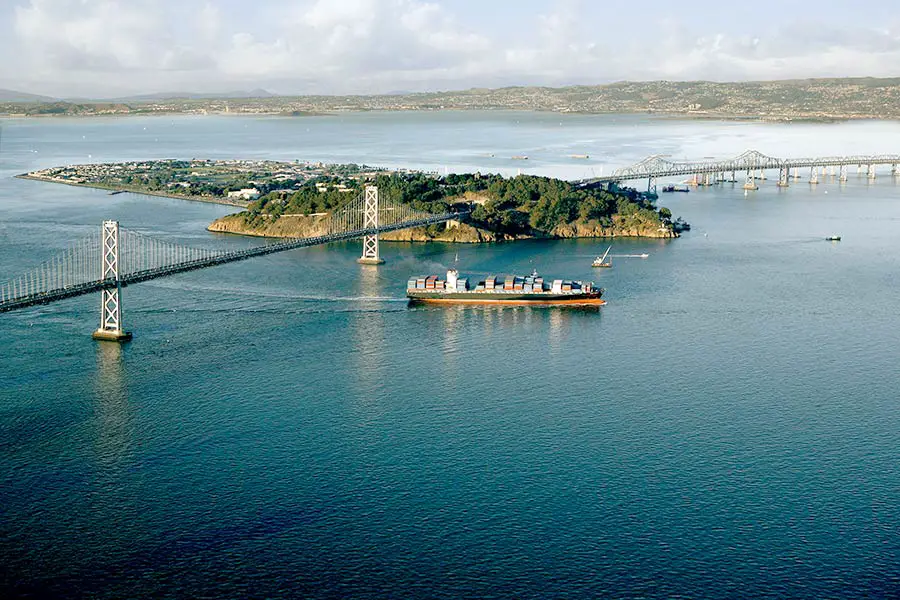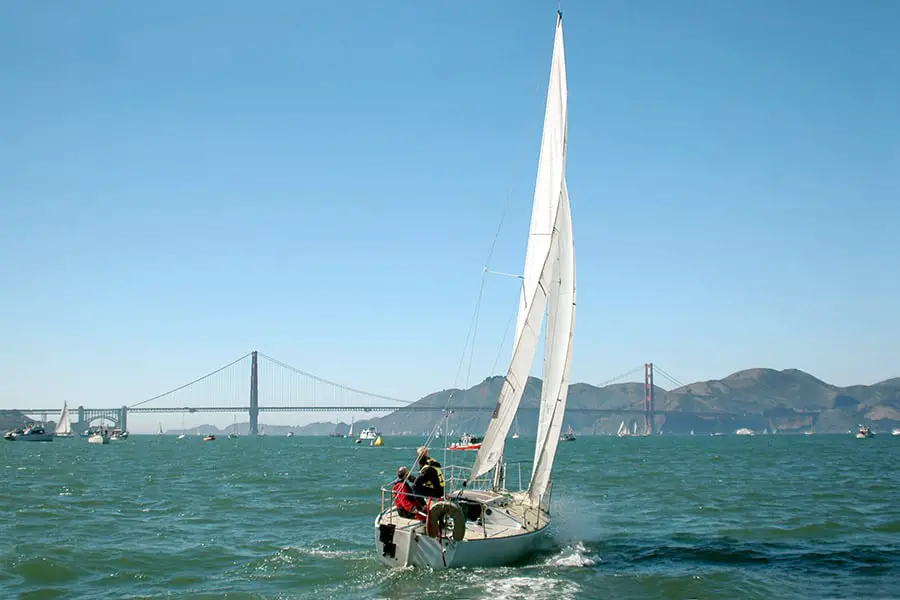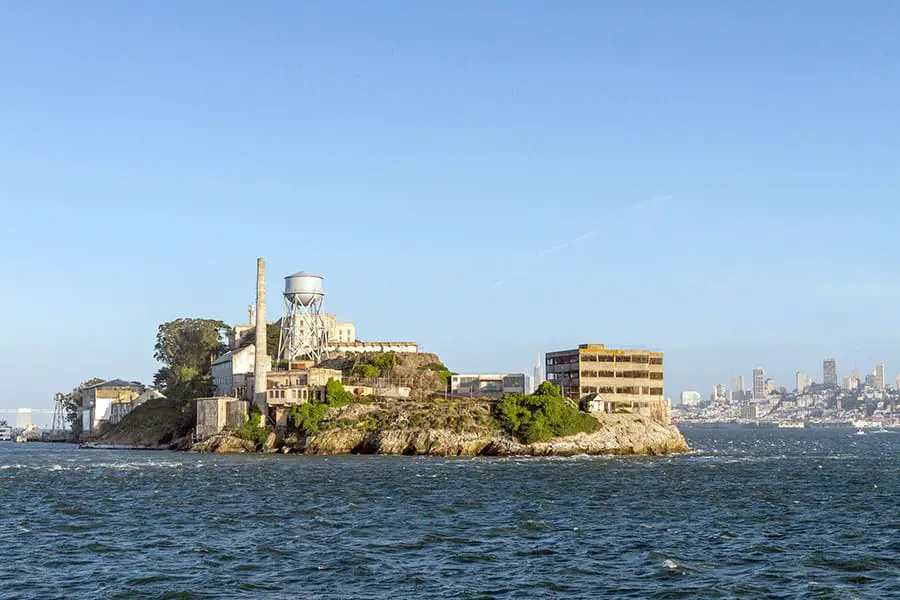
There is a small opening carved out of the edge of California’s coast that leads inland to a vast area of open, protected water called the San Francisco Bay. This bay provides not only natural beauty and recreation but also goods to local and international markets and life to the ecosystem. But is it the largest bay in California?
The famous San Francisco Bay is the largest bay in California. The Bay is made up of several interconnected bays, river deltas, and wetlands. The Bay is around 550 square miles, and it is so big that nine counties and over 40 cities touch the San Francisco Bay.
The San Francisco Bay is much more than the biggest bay in California. Without the Bay, the city of San Francisco would not exist as we know it today. It is difficult to understand the true size and impact of the San Francisco Bay without describing what it contains and what it provides. Continue reading to understand the impact that this incredible body of water has on the Bay Area.
How Big is the San Francisco Bay?
The San Francisco Bay is known as an estuary—a place where freshwater from a river and saltwater from the ocean meet in a partially enclosed area. In total, the Bay is made of four smaller bays. These are typically called South Bay, Central Bay, San Pablo Bay (sometimes called North Bay), and Suisun Bay.
Additionally, the wetlands or river delta where the Sacramento and San Joaquin Rivers meet and empty into the Bay is considered part of the estuary. Therefore, all these interconnected waterways are considered part of the San Francisco Bay.
The San Francisco Bay is about 60 miles long and anywhere from 3 to 12 miles wide. It is so big that it needs bridges to connect the east side to the west side. Two of the most famous bridges are the Golden Gate Bridge and the Bay Bridge. Both are hundreds of feet above the water and stretch across the Bay for almost two miles.
The San Francisco Bay is natural, not man-made. Because of the Bay’s proximity to major fault lines, plate movements thousands of years ago caused a lake to flow into the area where the Bay is today.
This water flow carved out the vast area of the Bay but only made one path into the ocean—the Golden Gate Strait. So what remained was a massive area of protected, calm water.

On the water of the Bay, you can see local fishing boats, oil tankers, barges, cargo ships, and tour boats. The bay is a natural harbor that protects these ships from the rough waters of the open ocean. In addition, the Bay is large enough that ships can stop and hook up to buoys connected to the seafloor. This feature affords large ships a safe place to stay as they wait to load or unload cargo.
The Bay also has various islands. Angel, Treasure, and Alcatraz islands are some of the most notable. On Alcatraz, there is an old federal penitentiary. Three prisoners escaped, and they were never found. It is rumored that they built small boats and floated for freedom, but other people think they drowned in the frigid water as they tried to make the 400-meter swim to land.

Many bridges, one federal prison, plenty of room for cargo ships, and exporting and importing goods from its ports are all examples of how big the San Francisco Bay really is.
Why is San Francisco Bay Water So Cold?
Because of the geography and wind direction near the San Francisco Bay, a phenomenon called upwelling frequently effects the Bay. Upwelling occurs when deep, cold water rises to the surface as it nears the shore, then strong winds blow from north to south, pushing cold water and wind into the bay.
Even in the summertime, San Francisco will often be significantly colder than inland California. While it gets into the 100s inland, the Bay Area will sometimes be in the 60s.
However, the water does get warmer in the summer, getting as high as 68 degrees on the hottest days. The winter water temperature averages 52 degrees, spring is around 55 degrees, and the summer and autumn average is 59 degrees.
Bay Area Answers Fun Fact: There is a 1.25-mile swim competition where participants swim right over the deepest section of the Bay. There is the wetsuit division and the skin division in the competition—some swimmers only wear a swimsuit, no wetsuit. This swim is for experienced open-water swimmers only since this area of the Bay can have strong currents.
Though the water is cold, that doesn’t stop people from surfing, kayaking, paddle boarding, and even swimming. So if you plan on getting in the water at the Bay, bringing some neoprene is always a bright idea.
Other Posts of Interest
- Why Is San Francisco So Foggy?
- Is It More Expensive To Live In San Francisco Or Los Angeles?
- Is San Francisco In The Mountains?
- What Are The Painted Ladies In San Francisco?
How Deep is the San Francisco Bay?
On average, the depth of the San Francisco Bay sounds more like a pool—the average depth is only 14 feet! Yet, different parts of the Bay are different depths.
For example, the most southern section of the Bay, South Bay, is the shallowest. Here you can find quiet, still water and places where marshes have been restored. In comparison, Central Bay near the Golden Gate Bridge is the deepest section at 340 feet.
With an average depth of 14 feet, you might be asking how large vessels navigate the Bay? Shipping lanes have been carved into the sea floor. These shipping lanes are like roads for ships to follow, places where the water is deep enough for them to navigate.
How Polluted is the San Francisco Bay?

San Francisco Bay does have a pollution problem. However, the problem is most serious close to the shore. When it rains in San Francisco, trash, chemicals, and anything else in the drain or road runs into the storm drains, onto the beaches, and into the ocean. Many times, these drains carry toxins directly to the ocean.
The more trash there is in the streets, the more debris will flow to the Bay during a heavy rain. One of the threats posed by this kind of pollution is the problem of microplastics. As tiny pieces of plastic (5 millimeters or smaller) wash onto beaches, animals like birds eat them and cannot digest them.
Birds often die from ingesting too many microplastics. This threat poses hazards to the balance of healthy wildlife populations and the overall health of the Bay.
Many of the most shallow parts of San Francisco Bay are the wetlands close to Suisun Bay, near where the rivers meet the bay. These marshy areas are home to fish, shellfish, and birds, and piles of sediment from shipping channels pollute the marsh and the creatures that live there.
The delicate wetlands of the bay have been hurt by piles of sediment dredged to keep shipping lanes clear. The shipping lanes are great for ships but not good for the wetlands.
Sediment settles in the routes and must be cleared out by dredges, and these dredges often leave the deposits in the wetlands. While the city is exploring other places to dump sediment from the dredging, no sure solution exists.
While there is some pollution in the bay, it is not everywhere. The Bay has breathtaking natural beauty to enjoy around every corner. Some organizations are working to improve the Bay by cleaning up pollution and advocating for change in policy.

Is San Francisco Bay Saltwater or Freshwater?
The water in the Bay is a combination of saltwater flowing from the ocean on one side of the bay and freshwater streams on the other side. The freshwater and saltwater mix to create what is called brackish water—water that is in between saltwater and freshwater.
This mix of fresh and saltwater creates a habitat where fish and other sea life thrive. Each year, salmon migrate up the freshwater rivers to spawn. This migration makes for great fishing in the Bay during some parts of the year.
The wetlands thrive off nutrients from the sea and the rivers; this, in turn, makes an oasis for migrating birds each year to rest up and eat small fish and bugs. It’s estimated that around one million birds pass through the Bay Area each year.
What is the Second Largest Bay in California?
Two hundred sixty-seven miles up the coast from San Francisco Bay is the second-largest bay in California, Humboldt Bay. This bay is about 14 miles long and can vary from .5 to 4.3 miles wide, a large bay, but not close to the size of San Francisco Bay. Humboldt Bay is not surrounded by a city like San Francisco, so this bay is a harbor used for fishing vessels, not imports and exports.
Like San Francisco Bay, there are rivers that feed into Humboldt Bay, so salmon can be found in the bay during the spawning season.
Appreciating the Largest Bay
San Francisco Bay is essential to the survival of sea and animal life and human life in the Bay Area. More than simply providing the products people need through imports, San Francisco Bay creates a place of calmness for boats waiting in water and for people appreciating the Bay’s beauty. From Alcatraz, to over 550 square miles of area, San Francisco Bay has earned the title of the biggest and most popular bay in California.





